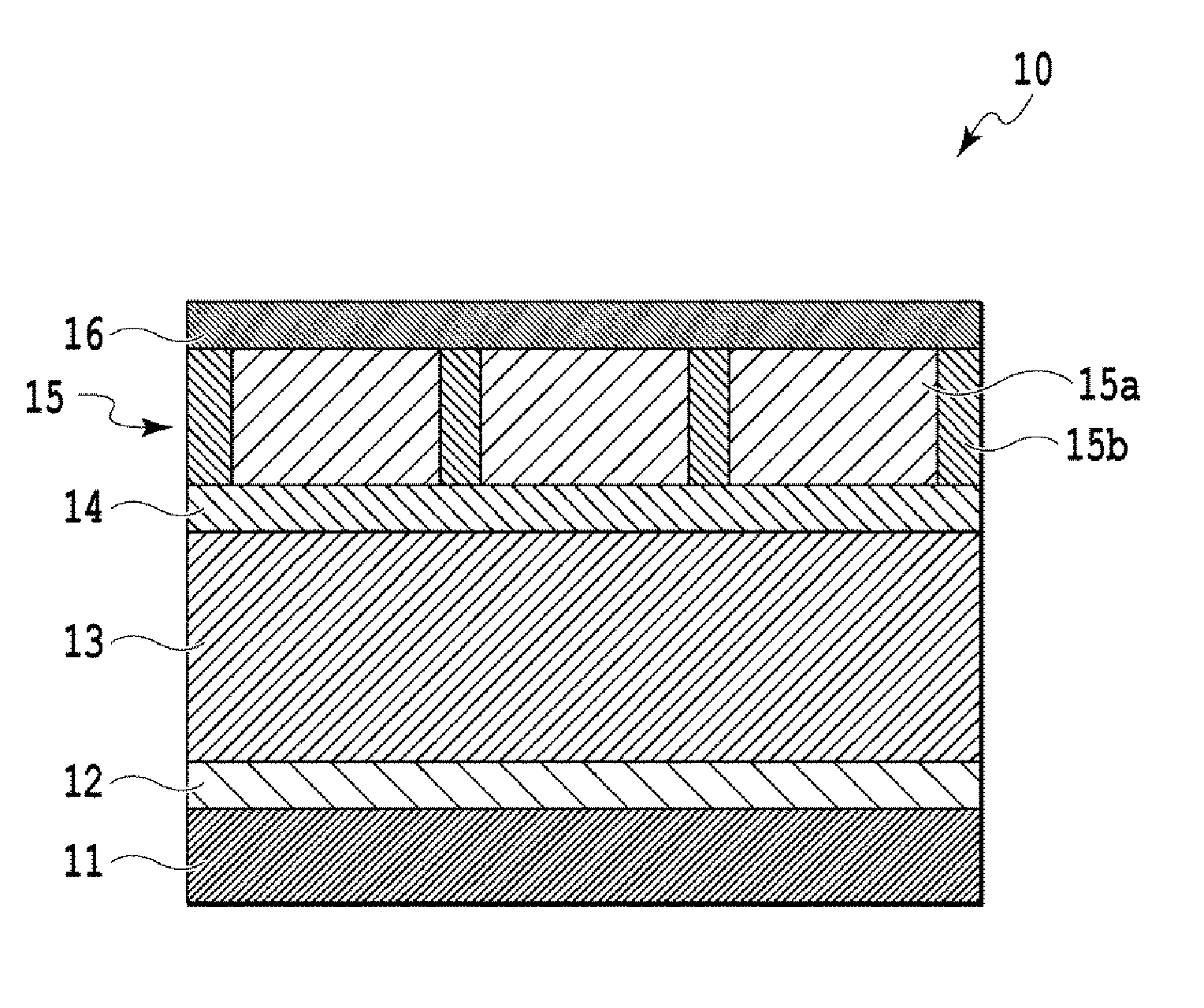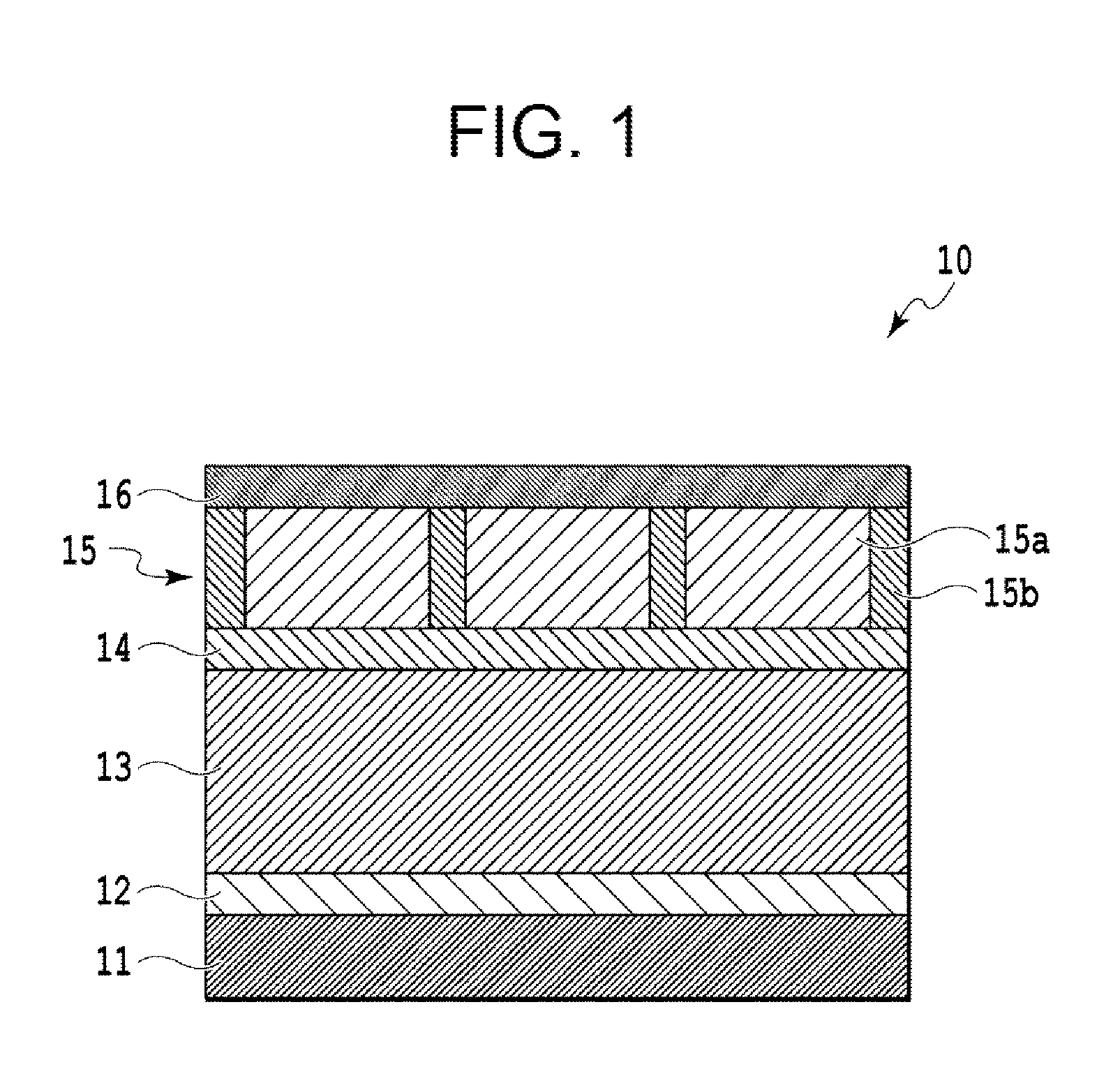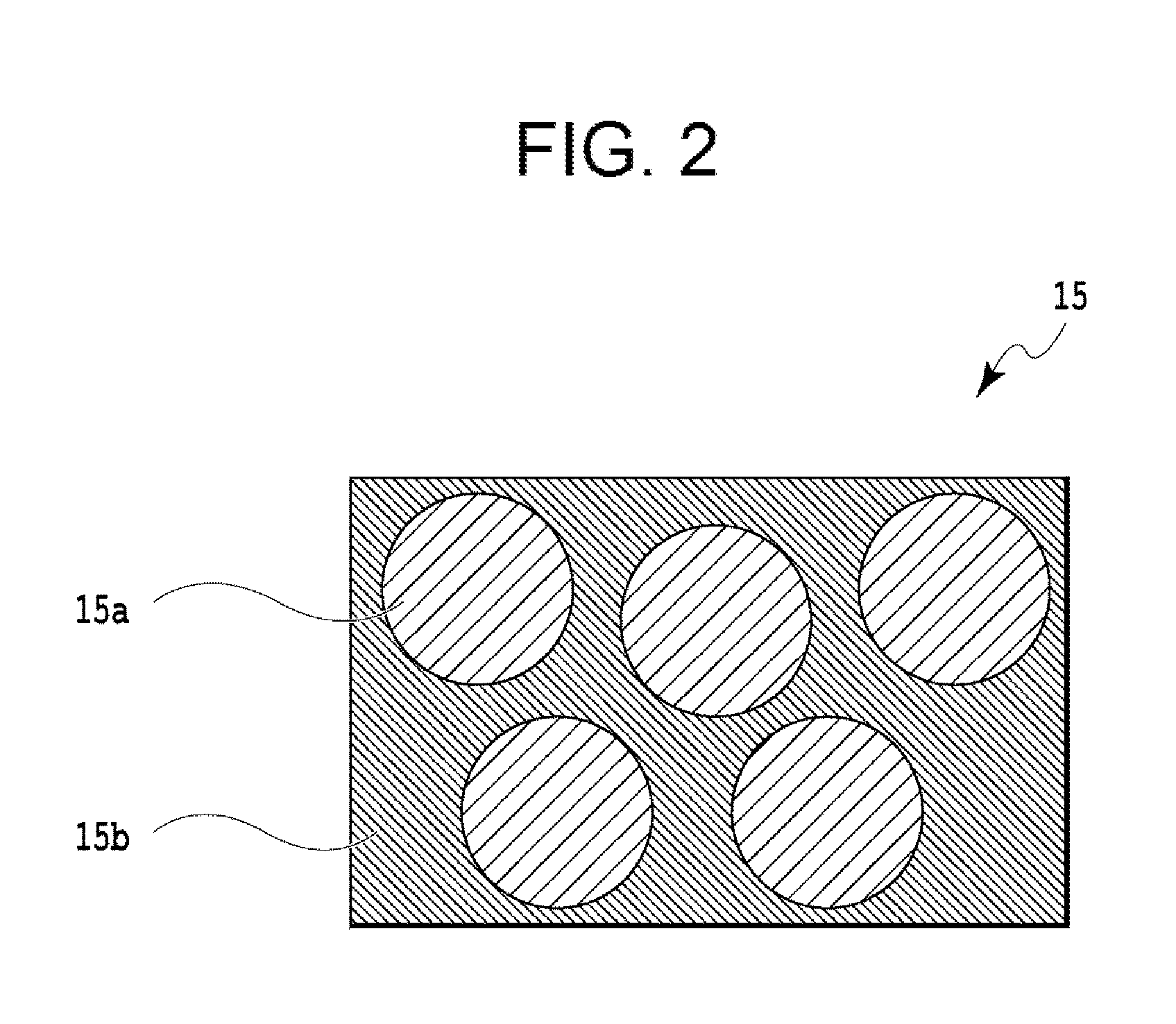Perpendicular magnetic recording medium
- Summary
- Abstract
- Description
- Claims
- Application Information
AI Technical Summary
Benefits of technology
Problems solved by technology
Method used
Image
Examples
example 1
[0072]A chemically reinforced glass substrate (N-10 glass substrate manufactured by HOYA Corporation) was used as the non-magnetic substrate. The layers ranging from the Ta-based adhesion layer to the C-based protective film were formed using an in-line type film forming apparatus without exposing the layers to the atmosphere. A Ta-based adhesion layer having a thickness of 5 nm was formed in an Ar gas atmosphere according to a DC magnetron sputtering method using a pure Ta target. Further, a Cr-based underlayer having a thickness of 20 nm was formed in an Ar gas atmosphere according to a DC magnetron sputtering method using a pure Cr target. Subsequently, a MgO-based seed layer having a thickness of 5 nm was formed according to an RF sputtering method using a MgO target in a state where the substrate was heated to 300° C. When the MgO layer was formed, the pressure of the Ar gas atmosphere was 0.02 Pa and the RF power was 200 W. Subsequently, a FePt—GeO2 layer was formed as a magne...
example 2
[0073]A FePt—C layer was formed as the first magnetic recording layer in the following manner. Specifically, the substrate was heated to 450° C., and then, the FePt—C layer having a thickness of 2 nm was formed according to a DC magnetron sputtering method using a target including FePt and C. The target including FePt and C was adjusted so as to have a composition of 60 vol % of FePt and 40 vol % of C during deposition. When the FePt—C layer was formed, the pressure of the Ar gas atmosphere was 1.0 Pa and the input DC power was 25 W. Subsequently, a FePt—GeO2 layer was formed as the second magnetic recording layer in the following manner. Specifically, the substrate was heated to 450° C., and then, a FePt—GeO2 layer having a thickness of 7 nm was formed according to a DC magnetron sputtering method using a target including FePt and GeO2. The target including FePt and GeO2 was adjusted so as to have a composition of 75 vol % of FePt and 25 vol % of GeO2 during deposition. When the Fe...
example 3
[0074]Layers were formed using the same method as used in Example 2 except that the FePt—GeO2 layer of Example 2 had a thickness of 3 nm.
PUM
 Login to View More
Login to View More Abstract
Description
Claims
Application Information
 Login to View More
Login to View More - R&D
- Intellectual Property
- Life Sciences
- Materials
- Tech Scout
- Unparalleled Data Quality
- Higher Quality Content
- 60% Fewer Hallucinations
Browse by: Latest US Patents, China's latest patents, Technical Efficacy Thesaurus, Application Domain, Technology Topic, Popular Technical Reports.
© 2025 PatSnap. All rights reserved.Legal|Privacy policy|Modern Slavery Act Transparency Statement|Sitemap|About US| Contact US: help@patsnap.com



